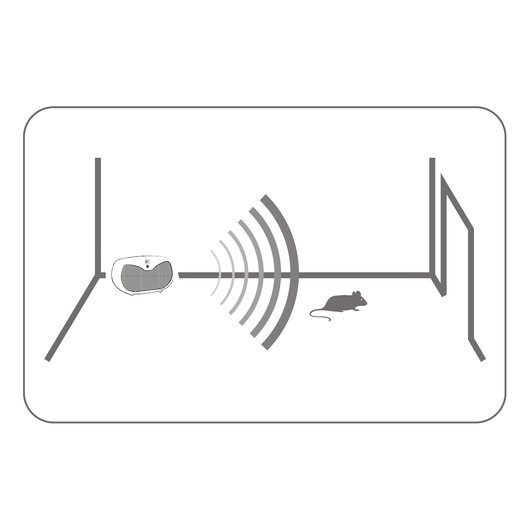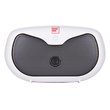Whether in the attic, cellar, garage or living area unwanted rodents can cause annoying damage and are often difficult to keep away. This becomes a real challenge especially if they have access from the outside and this access point cannot be closed. In such a situation it is advisable to drive the pests away instead of trying to catch them and this is best achieved with an ultrasonic rodent repellent.
Use ultrasound to drive unwanted rodents away
Ultrasound has many advantages when repelling mice and rats. Its use is absolutely environmentally friendly, as no chemicals or poisons are used. The use of ultrasound is particularly recommended in closed rooms, as this is where the greatest efficiency is achieved.
Immediate effectiveness! When the device is started up, rodents are unsettled immediately. The emitted high-frequency waves have a disturbing effect on mice and rats, but are imperceptible to humans. No negative effects were found in domestic animals such as dogs and cats.
The battery-operated ultrasonic rodent repeller has many positive features:
- 6 - 7 weeks’ independent use without a mains power source (depends on battery power)
- 8 x AA batteries are required
- Effective area of 20m²
- High frequency ultrasonic waves
- Safe and inaudible to people
- Expels the vast majority of rats, mice and other rodents
- No poison, no chemicals: environmentally conscious and safe
Unrestricted use throughout the home
No mains electricity socket? Not a problem! The solution is a battery-powered ultrasonic rodent repeller: a flexible solution independent of mains power sources that works exactly where it is needed.


![[Translate to EN:] [Translate to EN:]](/files/pics/7/2/csm_Mouse__860x586px_4295e63b71.jpg)
![[Translate to EN:] indian-meal moth on oatmeal [Translate to EN:] indian-meal moth on oatmeal](/files/pics/b/6/csm_indian-meal-moth-on-oatmeal_low_659108f917.jpg)
![[Translate to EN:] Schnecken [Translate to EN:] Schnecken](/files/pics/5/f/csm_Slug__860x586px_da4b2d7f83.jpg)
![[Translate to EN:] Vogel [Translate to EN:] Vogel](/files/pics/8/9/csm_Bird__860x586px_273b7ffaf9.jpg)
![[Translate to EN:] Ratten [Translate to EN:] Ratten](/files/pics/0/9/csm_Rat__860x586px_e3e988d139.jpg)
![[Translate to EN:] Maulwurf [Translate to EN:] Maulwurf](/files/pics/2/e/csm_Mole__860x586px_d43e7e8948.jpg)
![[Translate to EN:] Marder [Translate to EN:] Marder](/files/pics/d/6/csm_Marten__860x586px_7508da5714.jpg)
![[Translate to EN:] Fliege [Translate to EN:] Fliege](/files/pics/a/d/csm_Fly__860x586px_66c70bb32f.jpg)














